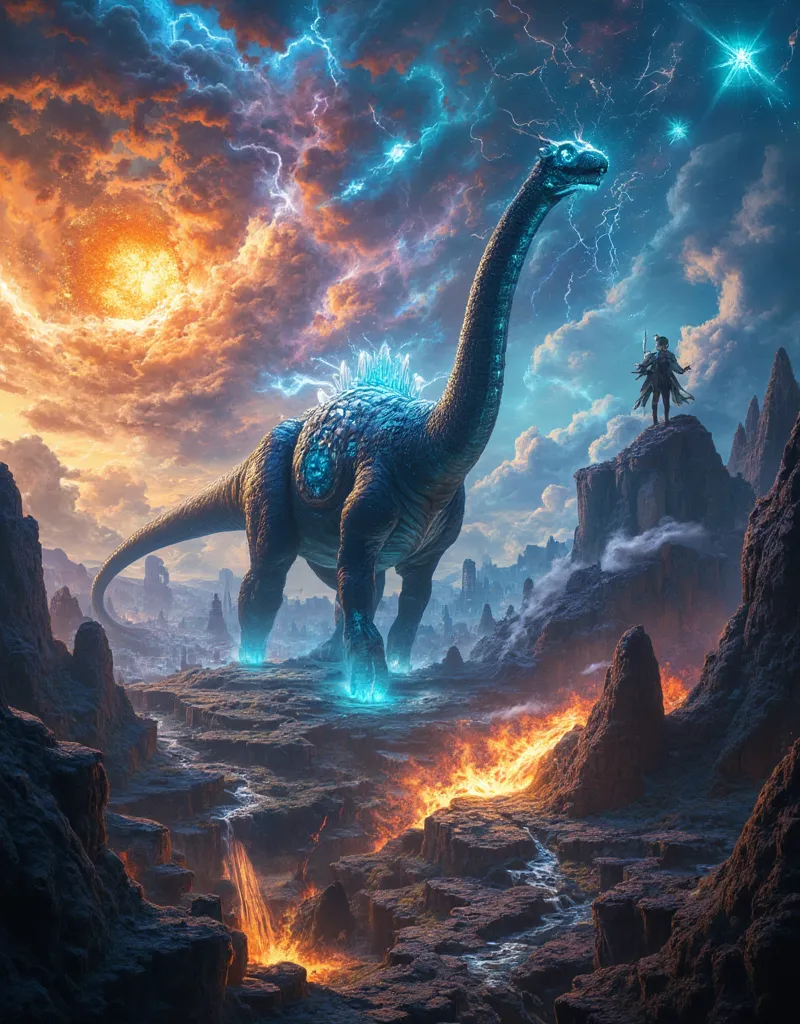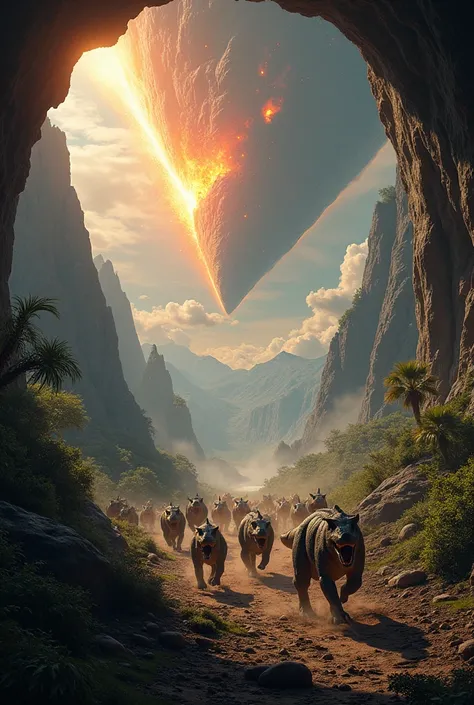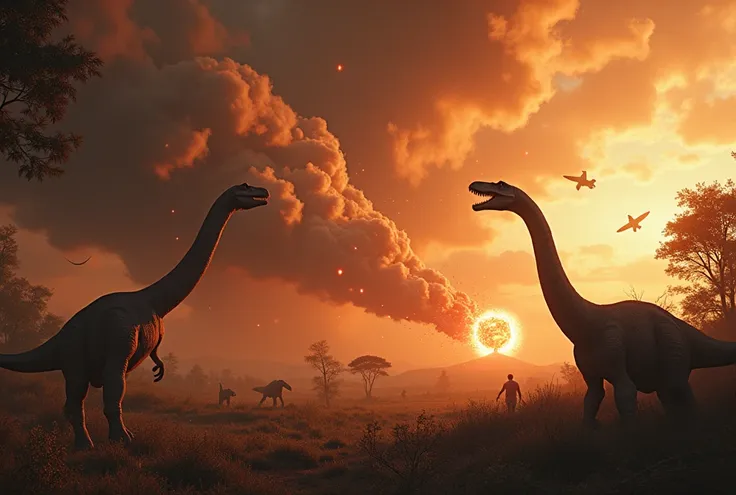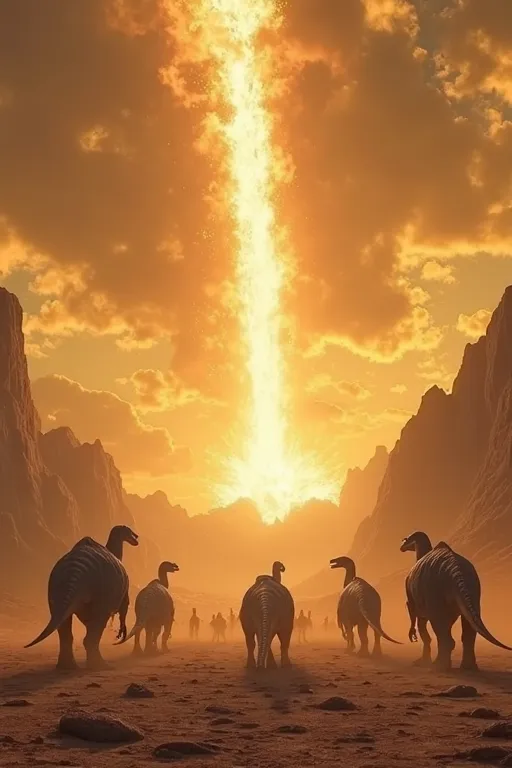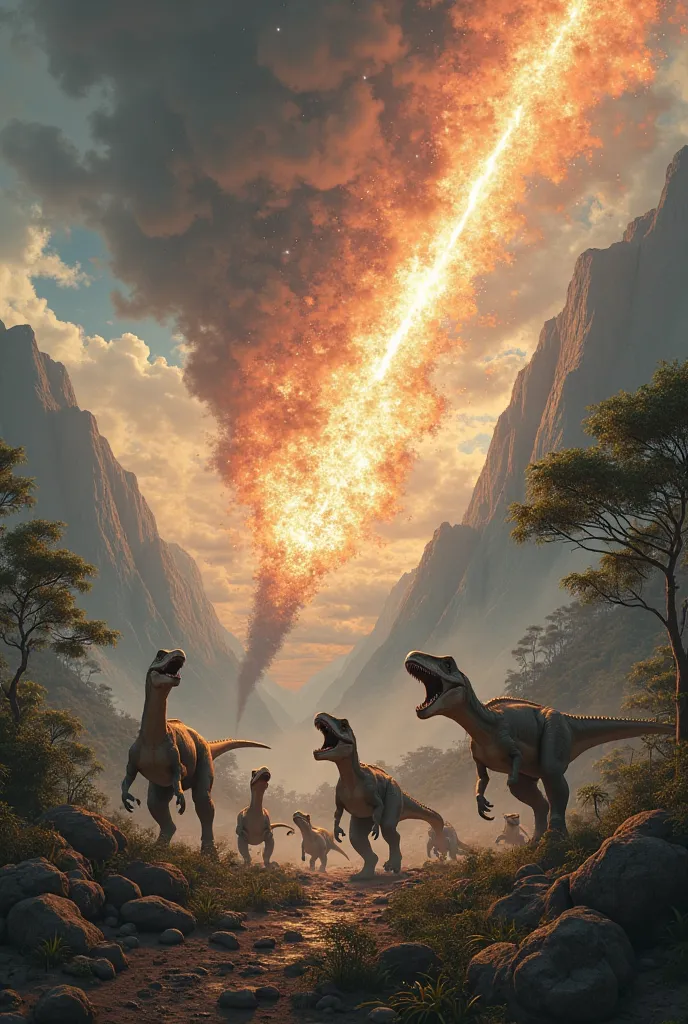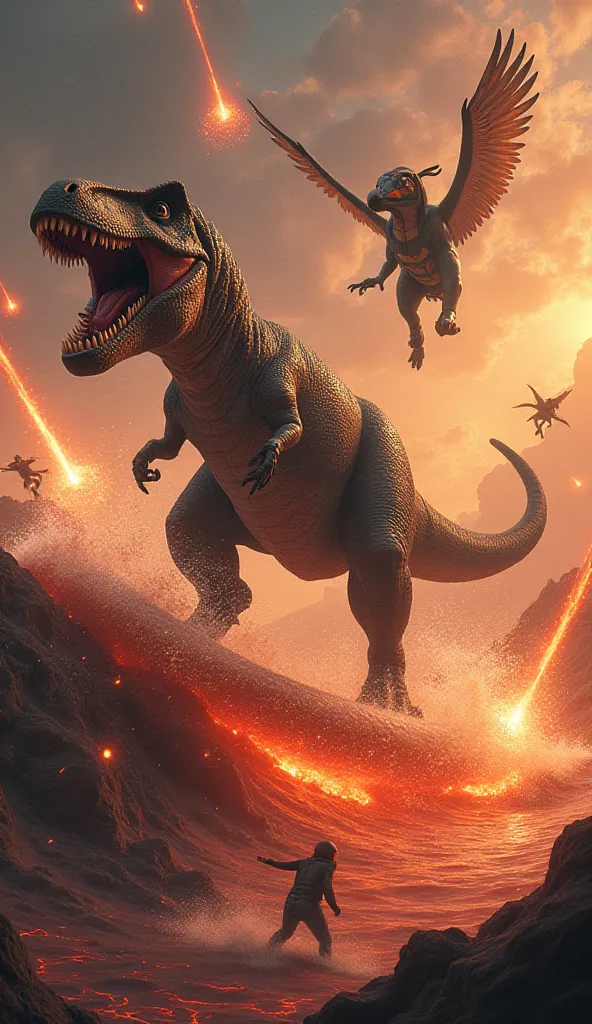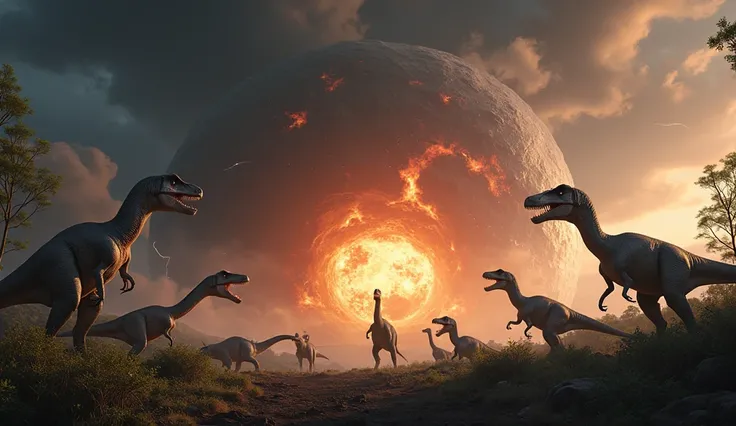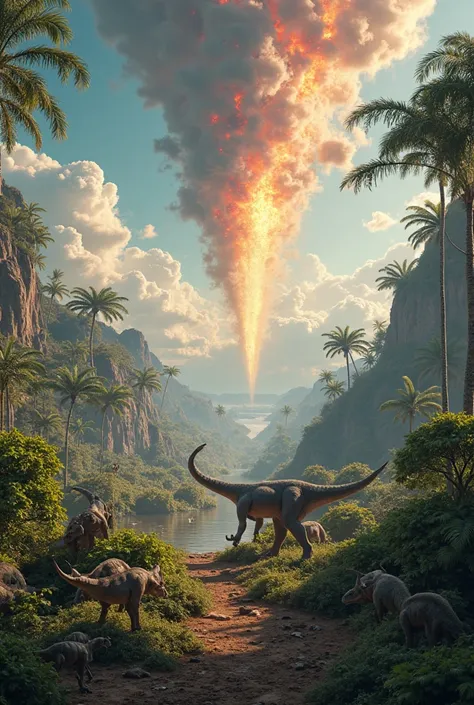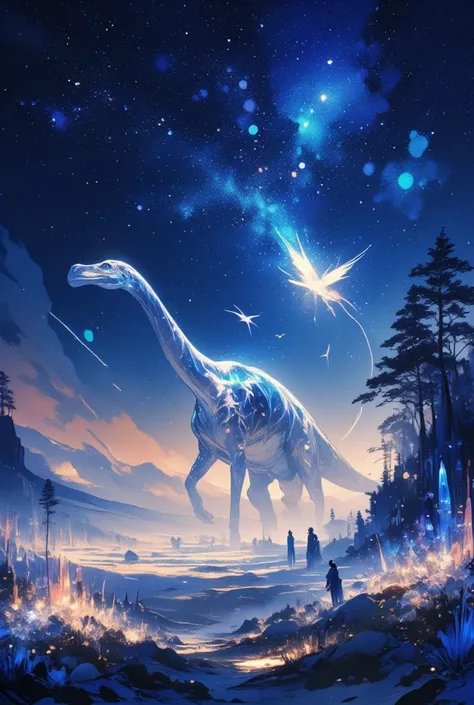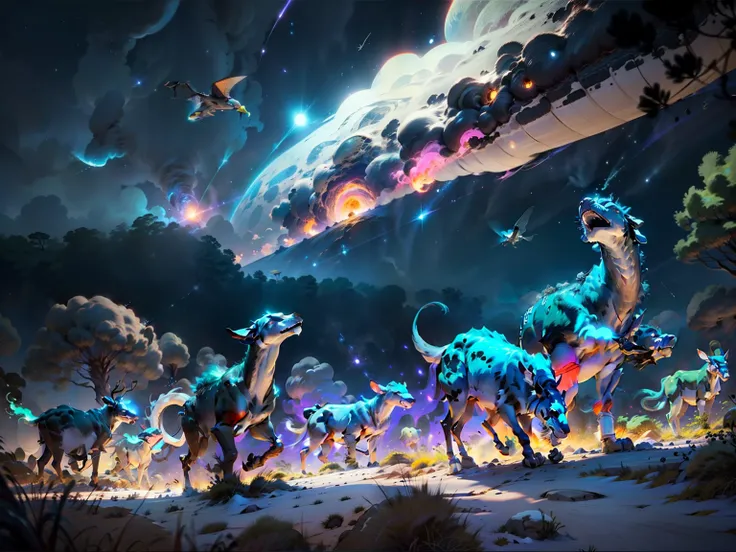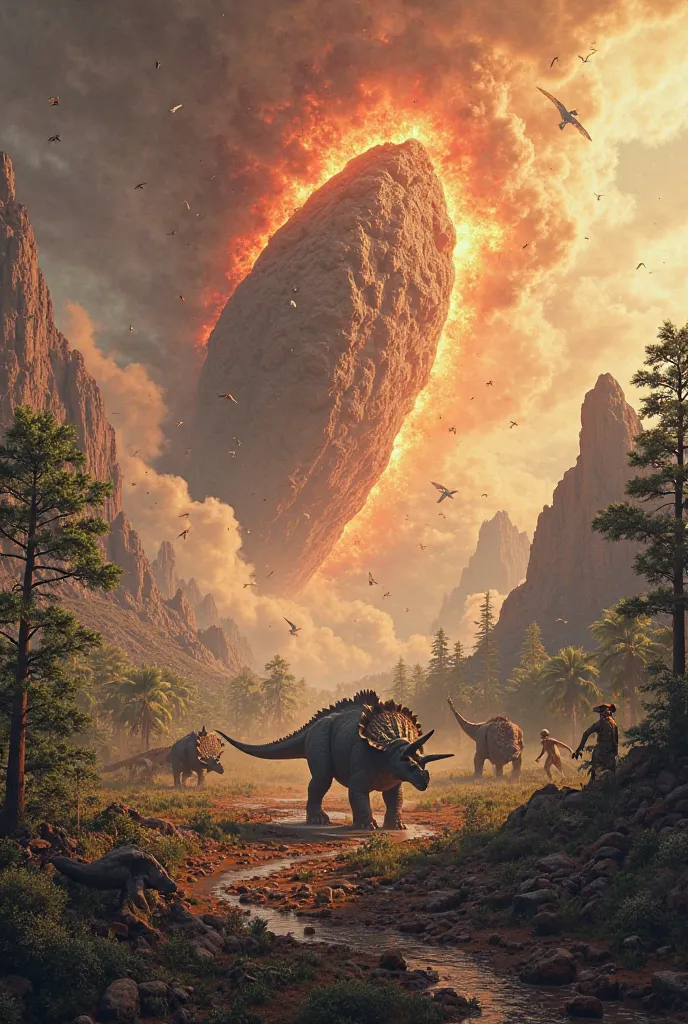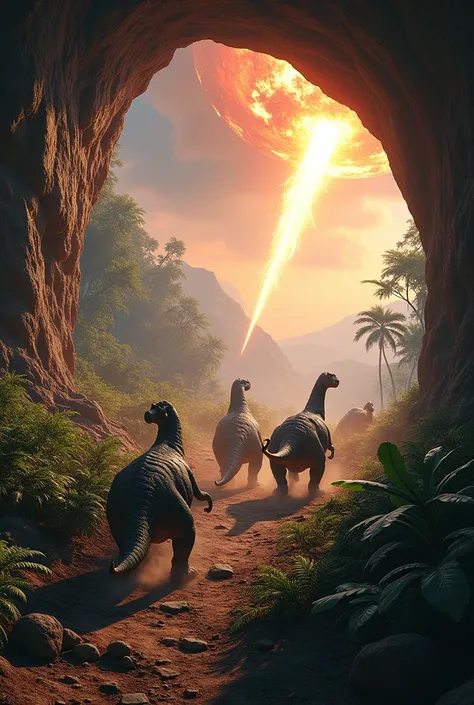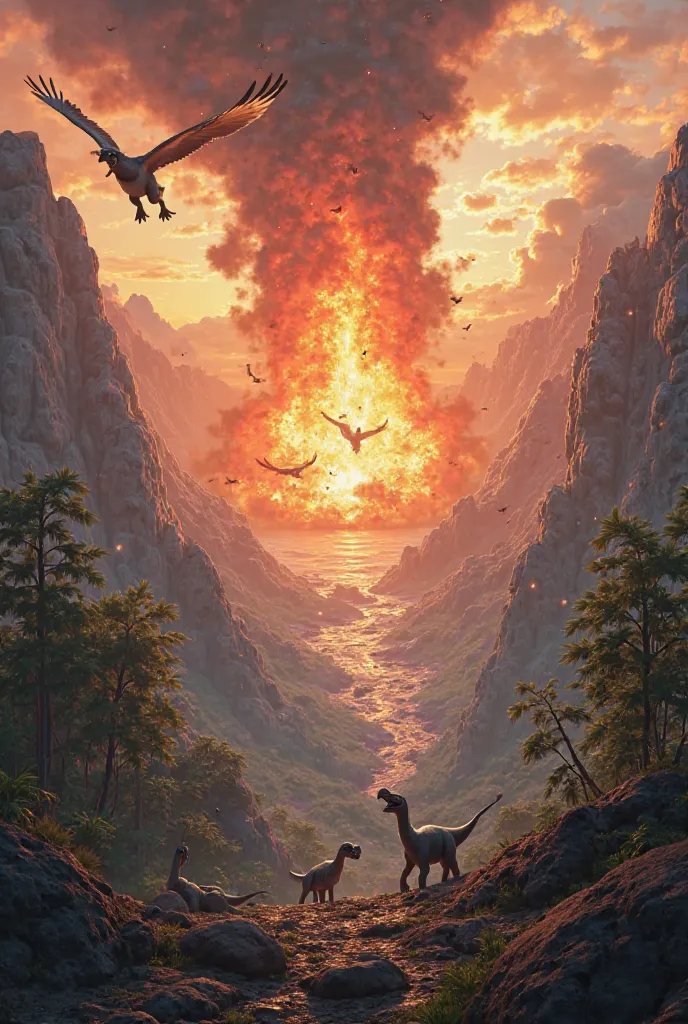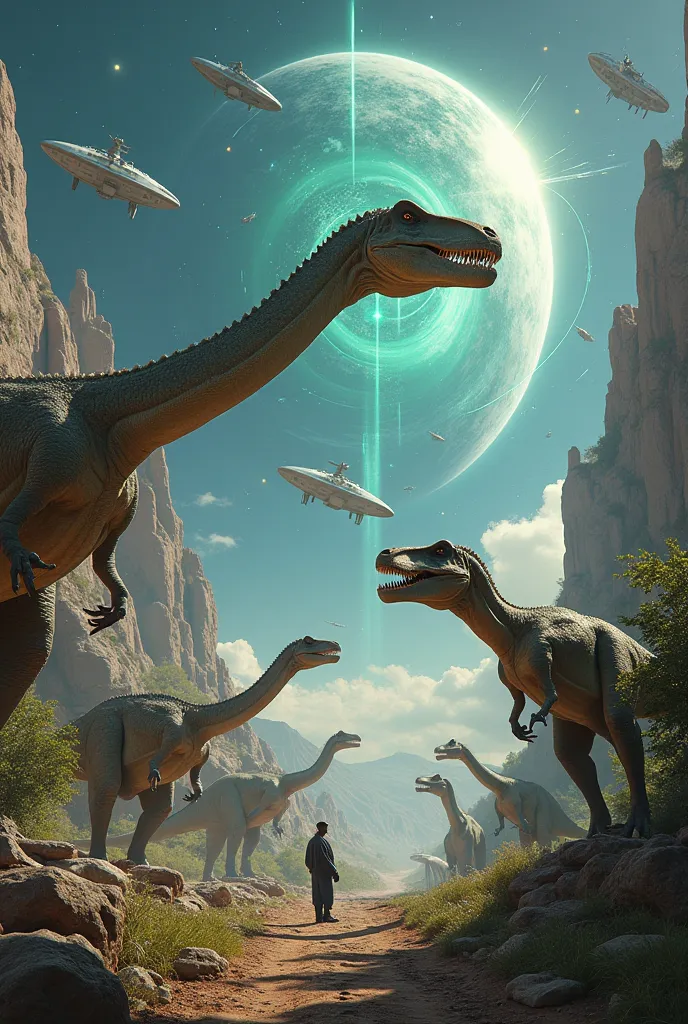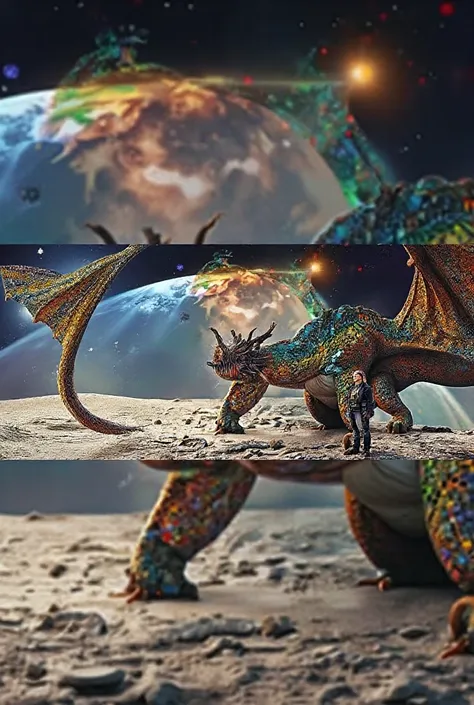A series of four pictures of dinosaurs running through a desert
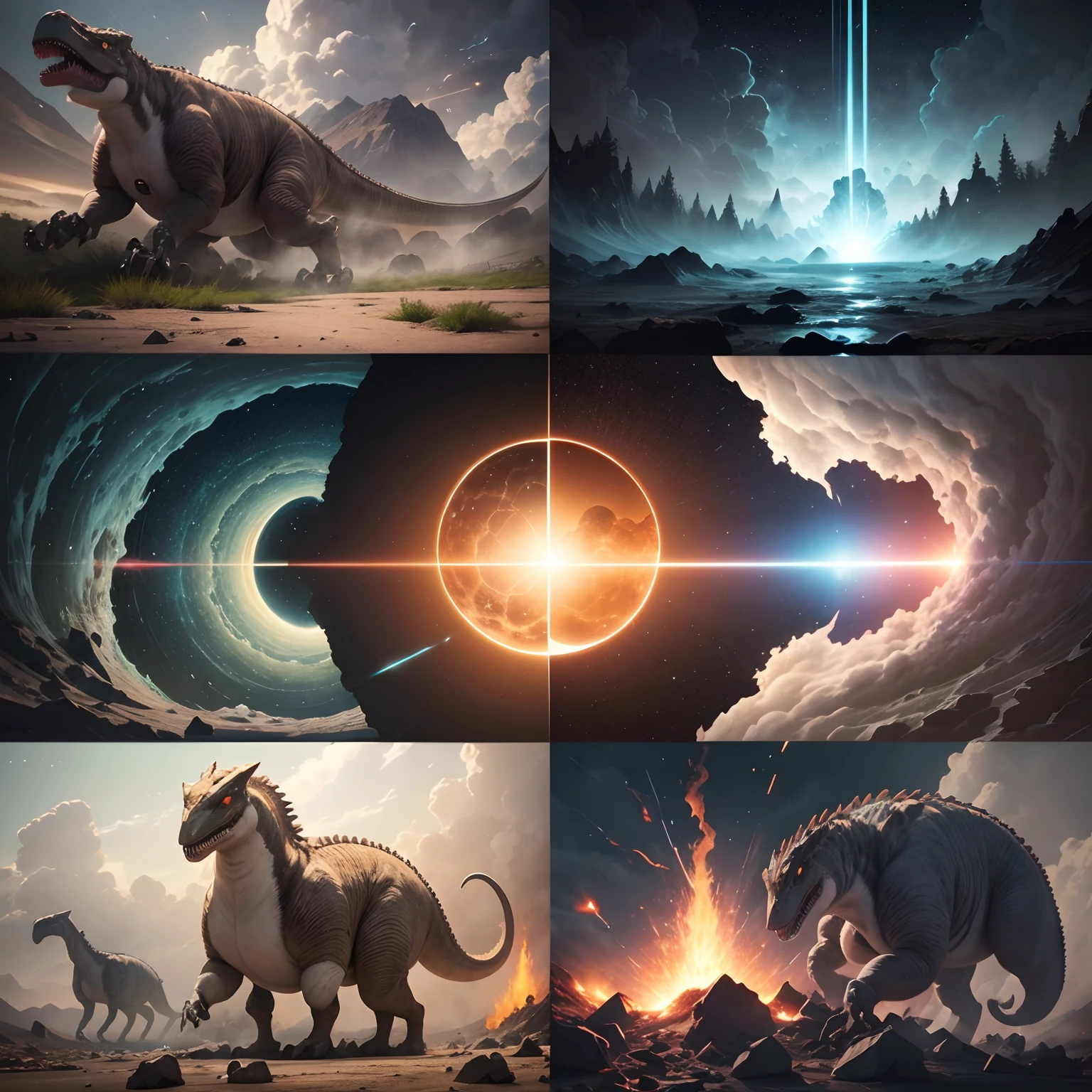

The exact moment of the dinosaur extinction occurred approximately 66 million years ago, at the end of the Cretaceous period. It was a catastrophic event known as the Cretaceous-Paleogene Extinction Event (K-Pg), which marked the end of the era of non-avian dinosaurs. K-Pg is believed to have been triggered by the impact of a large asteroid or comet in the region that is now known as the Yucatan Peninsula in Mexico, forming the Chicxulub crater. This impact had a devastating effect on life on Earth. The exact moment of the dinosaur extinction was characterized by a series of events. The asteroid's initial impact sparked large-scale fires and sent huge amounts of dust, ash and debris into the atmosphere. This blocked sunlight, disrupting photosynthesis and causing global cooling. The impact also generated shock waves and earthquakes of great magnitude. In addition, evidence suggests that the release of toxic gases such as sulfur dioxide and nitrous oxide from the impact and the subsequent associated volcanism contributed to the further destruction of the ecosystem. These combined events had a drastic effect on the biosphere, leading to the mass extinction of many species, including dinosaurs. After the extinction event, non-avian dinosaurs, along with most large terrestrial and marine life forms, disappeared from the face of the Earth. However, some groups of animals, such as birds, managed to survive and evolve, giving rise to the modern birds we know today. K-Pg marked a crucial turning point in the history of life on Earth and enabled the rise of new life forms.
Подсказки
Копировать подсказки
The exact moment of the dinosaur extinction occurred approximately 66 million years ago
,
at the end of the Cretaceous period
.
It was a catastrophic event known as the Cretaceous-Paleogene Extinction Event (K-Pg)
,
which marked the end of the era of non-avian dinosaurs
.
K-Pg is believed to have been triggered by the impact of a large asteroid or comet in the region that is now known as the Yucatan Peninsula in Mexico
,
forming the Chicxulub crater
.
This impact had a devastating effect on life on Earth
.
The exact moment of the dinosaur extinction was characterized by a series of events
.
The asteroid's initial impact sparked large-scale fires and sent huge amounts of dust
,
ash and debris into the atmosphere
.
This blocked sunlight
,
disrupting photosynthesis and causing global cooling
.
The impact also generated shock waves and earthquakes of great magnitude
.
In addition
,
evidence suggests that the release of toxic gases such as sulfur dioxide and nitrous oxide from the impact and the subsequent associated volcanism contributed to the further destruction of the ecosystem
.
These combined events had a drastic effect on the biosphere
,
leading to the mass extinction of many species
,
including dinosaurs
.
After the extinction event
,
non-avian dinosaurs
,
along with most large terrestrial and marine life forms
,
disappeared from the face of the Earth
.
However
,
some groups of animals
,
such as birds
,
managed to survive and evolve
,
giving rise to the modern birds we know today
.
K-Pg marked a crucial turning point in the history of life on Earth and enabled the rise of new life forms
.
Информация
Checkpoint & LoRA

Checkpoint
ReV Animated
0 комментариев
0
0
0












